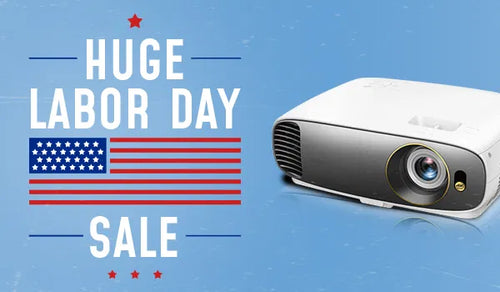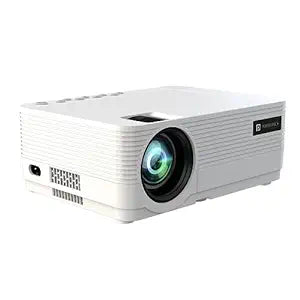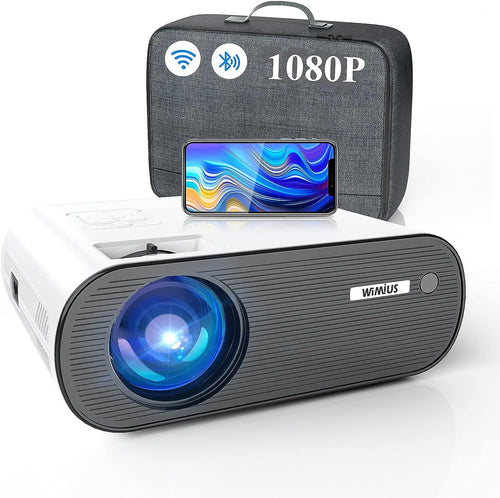Pocket Projectors: Are They Water Resistant?


Whether it’s business or pleasure, projectors always manage to be useful. In schools, they’re engaging tools that help you visualize what you’re learning. At home, projectors are great for family movie nights and parties. Pocket projectors, on the other hand, are all the more convenient.
How so? The main perk of using pocket projectors is the portability, allowing you to use them outside. However, are pocket projectors water-resistant? What if it rains? Let’s explore that in this guide.
You might also be interested in 5 game-changing portable projector screens
Table of Contents:
- What are Pocket Projectors?
- Are Pocket Projectors Water-Resistant?
- Benefits of Owning Pocket Projectors
- What to Look for in Good Outdoor Projectors?
What Are Pocket Projectors?
Pocket projectors (also known as mini projectors and portable projectors) are small, handheld projectors. They usually come with built-in batteries, but some, like the PIQO Mini Projector, are rechargeable via a USB extension.
As the name suggests, pocket projectors are usually small enough to fit in your pockets. They’re also ultra-lightweight and offer between 200 and 800 Lumens brightness. Although, the brightness level depends on the brand and model.
Pocket projectors aren’t as high-tech as larger projectors, which deliver up to 5000 Lumens brightness. They’re smaller, so they have smaller LED bulbs and lasers.
However, you don’t have to compromise on picture quality with pocket projectors. For example, the PIQO Mini Projector (made by PIQO, an American home electronics brand) delivers 1080p imaging, coming with a 200 Lumens LED light.

Consequently, even with a smaller lens, pocket projectors deliver high-quality videos and images.
Are Pocket Projectors Water Resistant?
Well, the answer is yes and no. Some pocket projectors are more water-resistant than others, depending on the brand. Brands like PIQO and even Phillips provide water and weather resistant projectors, making them ideal for outdoor (open-air cinema) use.
However, keep in mind that while some pocket projectors are water-resistant, they’re not waterproof. You can’t take them in water without doing some damage to the LED bulb.
Additionally, don’t forget to take the projector inside when you’re done using it. Regardless of in-built cooling systems, projectors heat up if you use them for long periods. Exposing it to water could result in short-circuiting or electrocution.

If you need to use a projector in water, you should get a water projector. These are specifically made for underwater and near-water usage.
If you don’t know, water projectors have:
- Modular floatation devices (to stay suspended in water)
- Fan screens (to control the height of the display)
- 3D images and video
- Laser projection
- Smart lighting (that changes with the light inside the water)
We don’t recommend getting water projectors unless necessary. For one, they’re very expensive, and for another, they’re hard to work for inexperienced users, especially considering you have to control the settings above water.
Benefits of Having Pocket Projectors
Even if pocket projectors aren’t water-resistant, what are the benefits of having them? With how far technology has advanced, loading high-performance devices into small packages has become much easier. Pocket or mini projectors have many great features, which gives you lots of incentive to buy them.
For example, pico projectors are:
- Good for Outdoor Use
Are you planning any outdoor movie nights? Pocket projectors are the perfect solution as they’re compact, wireless, and easily portable. The only thing you need to worry about is space and placement, but this is generally easy to figure out.
As mentioned, certain mini projectors have some resistance to water. Additionally, some mini projectors allow you to clean out debris and dust via dispatchable pads (the PIQO projector being one).
All this makes the projectors ideal for outdoor use.
- Versatile:
Secondly, since they’re easily portable, you can use pocket projectors for many different things. Although they’re best for watching movies and shows, you can also use them for presentations and even art displays.
The projectors usually have an in-built sound system, so you can also use them for karaoke or other musical activity.
As they’re handheld, you can even take pocket projectors to school or work. You can simply fit them in your pocket or bag.
- Cheaper and Easily Available Than Normal Projectors:
Another great perk of using pocket-sized projectors is that they’re cheaper. This is simply because they’re miniature versions of the real thing, and of course, smaller things cost less. Additionally, multiple brands specifically sell mini projectors, making them more accessible.

- Easy to Use:
Due to their convenient design, pocket-sized projectors are very simple to work. For instance, you can customize the screen size more easily.
Either through buttons or remote controls, you can easily control:
- Size
- Brightness
- Leveling of the screen
- Resolution
The PIQO Mini Projector even comes with a touch screen, through which you can access all your movie and video downloads.
In essence, pocket projectors like the PIQO Mini Projector are more practical investments, especially if you need something multi-purpose.
What to Look for in Good Pocket Projectors?
How do you know whether a pocket projector is high-quality or low-quality? Well, this information isn’t hard to discern if you know what to look for. For one, water-resistance and durability are marked by the projector’s construction and build quality.
Metal construction is more durable, but if the metal is too dense, the projector will be quite heavy.
It’s preferable to get a projector made with lightweight metal like aluminum. Moreover, you have to look at the image quality.
You can judge image quality by checking the:
- Maximum and minimum screen size (1080p/HD screens are better)
- Brightness levels (the range is usually 200 to 500 Lumens)
- Angle correction ability (which you can control via a remote or touch screen)
- Native aspect ratio (which determines how wide the image will be)
- Resolution levels
Most manufacturers keep this information under the product description. If not, you can simply look at the preliminary user manual (usually available with product description) or contact customer service.
For more details, we recommend checking out a pocket projector buying guide before making a purchase.
Conclusion
To sum it up, water-resistance levels depend on which pocket projector you’re using. For instance, the PIQO Mini Projector has great water resistance because it has a strong build. You can easily keep it outside for long periods without worrying about external damage.
Pocket projectors, due to their compactness and user-friendly features, are highly convenient devices. Therefore, we urge you to invest in a high-performance one like PIQO.








